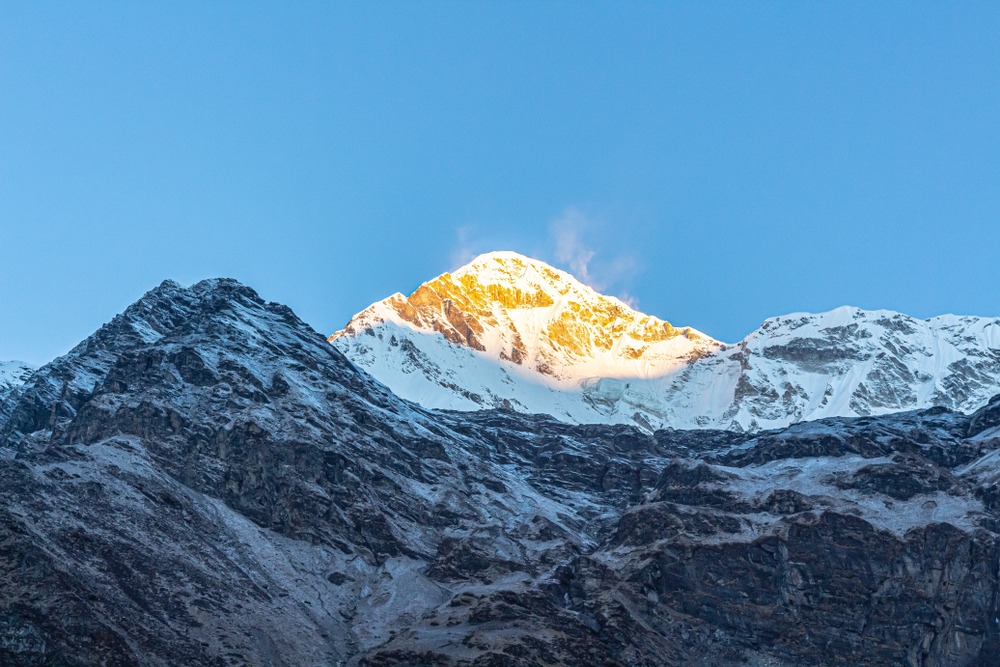Welcome to an adventure that transcends the ordinary—a journey into the heart of the Himalayas, where every step brings you closer to nature’s grandeur and your inner explorer. Join me as we delve into the captivating world of the Pindari Glacier Trek, where each moment is a testament to the beauty of our planet.
1. Understanding Pindari Glacier Trek
The Pindari Glacier Trek is not just a trek; it’s an odyssey into the heart of one of the most accessible glaciers in the Indian Himalayas. Located in the Kumaon region of Uttarakhand, India, this trek offers adventurers a chance to witness the awe-inspiring beauty of the Himalayas up close. The trail winds through quaint villages, dense forests, and alpine meadows, culminating in the mesmerizing sight of the Pindari Glacier itself. It’s a journey that promises adventure, discovery, and a deep connection with nature.
2. Preparing for the Pindari Glacier Trek
Before embarking on the Pindari Glacier Trek, thorough preparation is key to ensuring a safe and enjoyable experience. Start by assessing your fitness level and gradually increasing your stamina through regular exercise. Acquire the necessary permits from the local authorities and gather all essential gear, including sturdy hiking boots, warm clothing layers, a reliable backpack, and a high-quality camera to capture the breathtaking landscapes along the way. Additionally, familiarize yourself with the trekking route, weather conditions, and emergency protocols to be well-prepared for any situation that may arise.
3. Best Time to Visit Pindari Glacier Trek
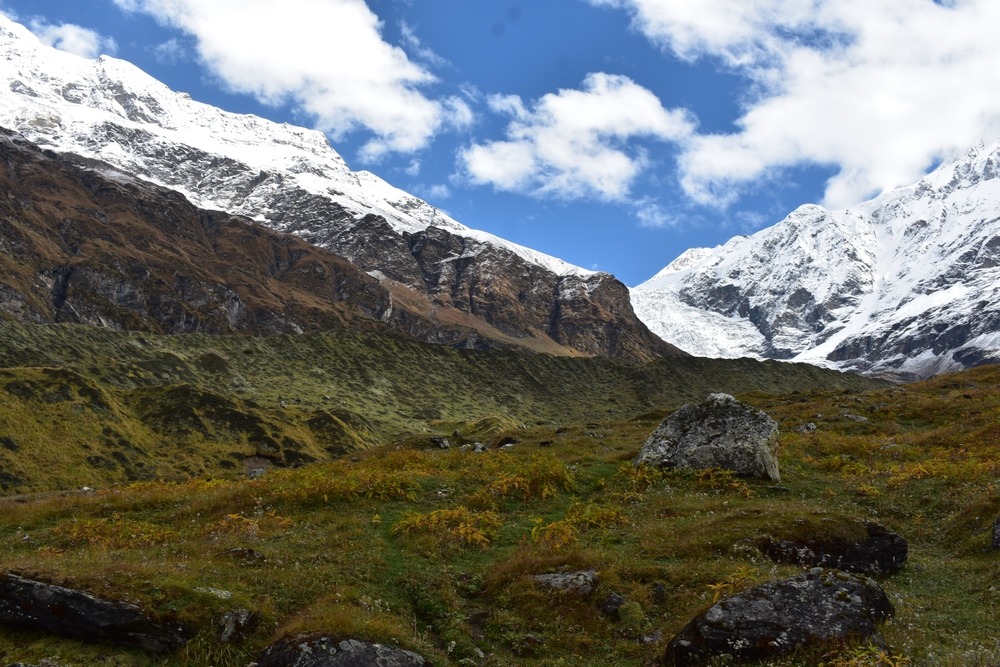
The best time to undertake the Pindari Glacier Trek is during the summer and autumn months, from May to October. During this period, the weather is relatively stable, with clear skies and moderate temperatures, making it ideal for trekking activities. The spring months offer vibrant blooms and lush greenery, while the autumn season showcases the stunning colors of changing foliage. However, it’s essential to avoid the monsoon season (July to September) due to heavy rainfall and the risk of landslides, which can make the trails hazardous and inaccessible.
4. Route and Itinerary Of Pindari Glacier Trek
The Pindari Glacier Trek typically begins from the picturesque village of Loharkhet or Song, serving as the gateway to the Himalayas. From there, trekkers follow a well-defined trail that meanders through lush forests of oak, rhododendron, and pine, offering glimpses of cascading waterfalls and colorful wildflowers along the way. As the journey progresses, the landscape transitions into rugged terrain, with panoramic views of snow-capped peaks looming in the distance. Trekkers can choose from various itineraries ranging from 5 to 7 days, depending on their preferences and fitness levels. Each day presents new challenges and rewards, from crossing pristine rivers to conquering mountain passes, culminating in the ultimate destination—the majestic Pindari Glacier.
5. Packing Essentials For Pindari Glacier Trek
Packing smartly is essential for a successful trek in the Himalayas. Begin by assembling a comprehensive packing list that includes essential items such as:
- Sturdy hiking boots with good ankle support
- Lightweight and breathable clothing layers suitable for varying weather conditions
- Waterproof jacket and pants to shield against rain and snow
- Thermal wear to keep warm during chilly nights at higher altitudes
- Hat, gloves, and scarf for sun protection and added warmth
- Sleeping bag and sleeping pad for comfortable rest during overnight stays
- Trekking poles for support and stability on uneven ground
- First aid kit with bandages, blister treatment, and necessary medications
- Water purification tablets or filtration system to ensure safe drinking water
- High-energy snacks such as nuts, dried fruits, and energy bars to refuel during the trek
- Portable stove and fuel for cooking meals at campsites where facilities are limited
- Having a headlamp or a flashlight with extra batteries might help you navigate in low light.
- Map, compass, or GPS device for navigation and route finding
- Multi-tool or knife for various tasks such as cutting rope or repairing gear
- Lightweight and compact camera or smartphone for capturing memorable moments
- A notebook and pen to jot down notes or draw while you’re relaxing
By packing strategically and efficiently, you can minimize the weight of your backpack while ensuring you have everything you need for a safe and comfortable trekking experience.
6. Accommodation Options
During the Pindari Glacier Trek, trekkers have the option to stay in a variety of accommodations ranging from guesthouses to camping under the stars. Along the trekking route, you’ll find several guesthouses or lodges offering basic amenities such as dormitory-style rooms, shared bathrooms, and simple meals. These accommodations provide a convenient and comfortable option for trekkers to rest and recharge after a long day on the trail. For those seeking a more immersive experience in nature, camping is an excellent alternative. There are designated campsites along the trekking route where you can pitch your tent and spend the night surrounded by the serenity of the Himalayan wilderness. Camping allows you to fully immerse yourself in the natural beauty of the landscape, with the twinkling stars above and the soothing sounds of nature all around.
7. Safety Measures
Safety is paramount when trekking in the remote and rugged terrain of the Himalayas. The following are some crucial safety precautions to remember:
- Acclimate gradually to the altitude to reduce the risk of altitude sickness. Be mindful to your body, move slowly, and drink plenty of water.
- Always check the weather forecast before setting out on the trek. Be ready for unforeseen weather events, such as heavy winds, rain, or snow.
- Trek with a certified guide or experienced trekking partner who is familiar with the route and terrain. They can provide valuable insights, assistance, and support throughout the journey.
- Stick to designated trekking trails and avoid taking shortcuts or deviating from the route. This helps minimize the risk of getting lost or encountering hazards such as unstable terrain or wildlife.
- Carry essential safety gear, including a first aid kit, emergency shelter, whistle, and personal locator beacon (PLB) or satellite phone for communication in case of emergencies.
- Drink plenty of water throughout the day to stay hydrated. Dehydration can exacerbate altitude sickness and fatigue, so it’s crucial to stay hydrated, even if you don’t feel thirsty.
- To shield yourself from the sun, use sunscreen, sunglasses, and a wide-brimmed hat. The sun’s rays are more intense at higher altitudes, increasing the risk of sunburn and heat exhaustion.
- Be mindful of your physical limits and know when to rest or turn back if you’re feeling unwell or fatigued. Pushing yourself too hard can increase the risk of injury or illness, so listen to your body and take breaks as needed.
By following these safety measures and exercising caution while trekking, you can minimize the risks and enjoy a safe and memorable adventure in the Himalayas.
8. Fitness Preparation
Physical fitness is crucial for tackling the challenges of the Pindari Glacier Trek. The trek involves long hours of walking on uneven terrain, steep ascents and descents, and high altitudes, all of which require stamina, strength, and endurance. To prepare for the trek, incorporate the following fitness activities into your routine:
- Cardiovascular exercises such as walking, jogging, cycling, or swimming to improve your aerobic fitness and endurance.
- Strength training exercises targeting the major muscle groups, including the legs, core, and upper body, to build strength and stability.
- Flexibility and mobility exercises such as yoga, stretching, or Pilates to improve your range of motion and prevent injuries.
- Hiking or trekking on local trails with varying terrain and elevation gain to simulate the conditions of the Pindari Glacier Trek and build your hiking fitness.
- Interval training or hill repeats to improve your speed and power for tackling steep ascents and descents during the trek.
Start your fitness preparation several weeks or months before your planned trekking date to allow enough time to gradually increase your fitness level and build endurance. Aim for a balanced and well-rounded fitness routine that includes a mix of cardiovascular, strength, flexibility, and mobility exercises to prepare your body for the physical demands of the trek. Listen to your body, progress at your own pace, and be consistent with your training to maximize your fitness gains and enhance your trekking experience.
9. Wildlife Encounters
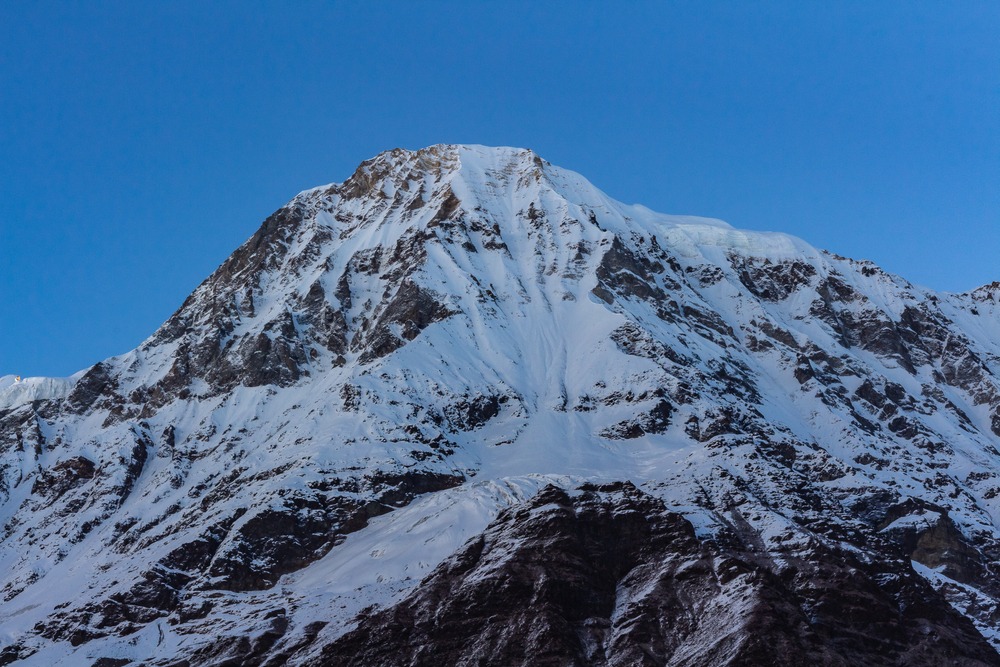
The Himalayan region is home to a diverse array of wildlife species, from elusive snow leopards and Himalayan bears to playful langur monkeys and colorful birdlife. As you trek through the wilderness of the Pindari Glacier, keep your eyes peeled for signs of wildlife and remain respectful of their natural habitat. Here are some pointers for interacting with wildlife:
- Maintain a safe distance: While it’s exciting to spot wildlife in their natural environment, it’s important to keep a respectful distance to avoid disturbing or alarming the animals. Use binoculars or a camera with a zoom lens to observe wildlife from afar without getting too close.
- Stay quiet and still: Avoid making loud noises or sudden movements that could startle or scare away wildlife. Instead, move slowly and quietly to minimize your impact on the surrounding environment.
- Observe from a distance: If you encounter wildlife on the trail, give them plenty of space and observe them from a safe distance. Avoid approaching or chasing animals, as this can stress them out and disrupt their natural behavior.
- Respect their habitat: Be mindful of the fragile ecosystems and habitats that wildlife depend on for survival. Stay on designated trails, avoid trampling vegetation, and refrain from littering or leaving behind any food scraps that could attract wildlife.
- Learn about local wildlife: Take the time to educate yourself about the wildlife species that inhabit the area where you’ll be trekking. Learn how to identify different species, their behaviors, and their ecological roles in the ecosystem. This will enhance your appreciation and understanding of the natural world around you.
- Report any sightings: If you encounter rare or endangered species during your trek, consider reporting your sightings to local conservation authorities or wildlife organizations. Your observations can contribute valuable data to ongoing research and conservation efforts aimed at protecting vulnerable wildlife populations.
By following these guidelines and practicing responsible wildlife viewing etiquette, you can enjoy memorable encounters with Himalayan wildlife while minimizing your impact on their natural habitat.
10. Photography Tips
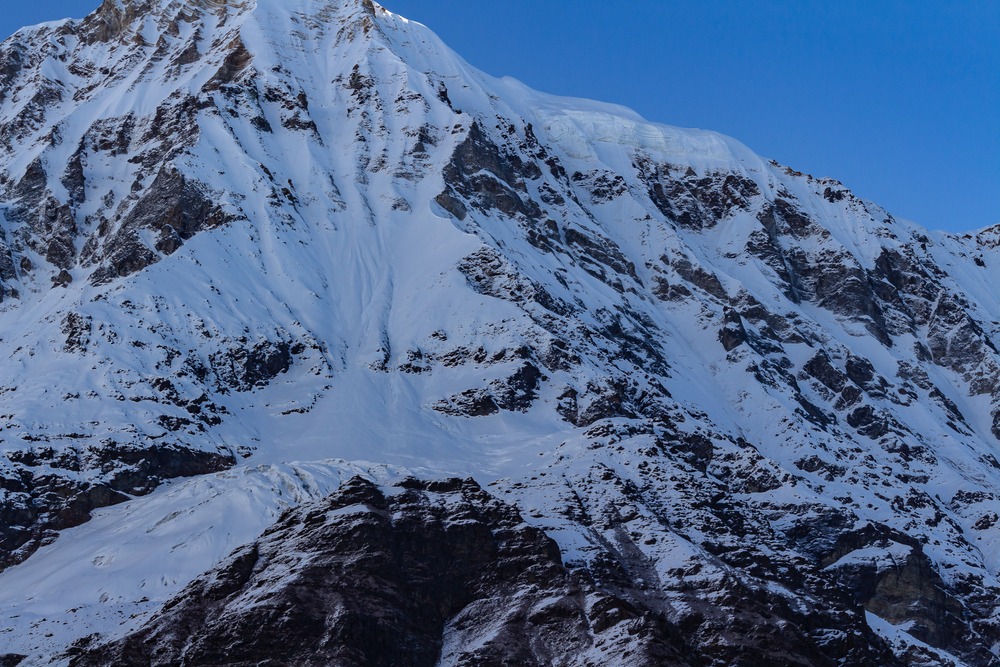
The Pindari Glacier Trek offers endless opportunities for capturing stunning photographs of the Himalayan landscape, from towering peaks and pristine glaciers to lush forests and vibrant alpine meadows. Whether you’re an experienced photographer or a novice enthusiast, here are some tips for capturing memorable images along the trek:
- Scout for unique compositions: Explore different vantage points and perspectives to find interesting compositions and viewpoints that showcase the beauty and grandeur of the landscape. Look for leading lines, framing elements, and interesting foregrounds to add depth and visual interest to your photos.
- Use natural light to your advantage: Pay attention to the quality and direction of light throughout the day, and adjust your shooting schedule accordingly. Early morning and late afternoon are ideal times for photography, as the soft golden light creates warm, flattering tones and long shadows that add drama to your images. Steer clear of bright midday sunshine when taking photos since it can result in overexposed highlights and harsh shadows.
- Experiment with exposure settings: Take control of your camera’s exposure settings, including aperture, shutter speed, and ISO, to achieve the desired exposure and depth of field in your photos. Use a narrow aperture (high f-stop) for maximum depth of field in landscape shots, and adjust your shutter speed and ISO to maintain proper exposure in varying lighting conditions.
- Focus on the details: Don’t overlook the small details and textures that make the Himalayan landscape unique. Look for interesting patterns, textures, and colors in rocks, ice formations, vegetation, and wildlife to add visual interest to your photos.
- Capture the moment: Beyond the landscapes, don’t forget to capture the human element of the trek—portraits of fellow trekkers, candid moments of laughter and camaraderie, and scenes of daily life in the mountains. These images help tell the story of your trek and evoke the emotions and experiences shared along the way.
- Be patient and persistent: Nature photography requires patience and perseverance, as conditions can change rapidly, and the perfect shot may require multiple attempts. Take your time, stay observant, and be prepared to wait for the right moment to capture that once-in-a-lifetime image.
By applying these photography tips and techniques, you can create stunning images that capture the essence and beauty of the Pindari Glacier Trek and preserve your memories for years to come.
11. Guided vs. Solo Trekking
When planning your Pindari Glacier Trek, you’ll need to decide whether to trek independently or join a guided trekking group. Each option offers its own set of advantages and considerations, depending on your preferences, experience level, and comfort with navigating remote wilderness areas.
Guided Trekking:
- Expert guidance and support: Joining a guided trekking group provides access to experienced trek leaders and local guides who are familiar with the terrain, culture, and logistics of the trek. They can offer valuable insights, assistance, and support throughout the journey, ensuring a safe and enjoyable experience for all participants.
- Local knowledge and cultural immersion: Guided treks often include opportunities to interact with local communities, learn about their culture and traditions, and gain a deeper appreciation for the region’s natural and cultural heritage. Trek leaders can provide insights into the history, ecology, and wildlife of the area, enriching your trekking experience.
- Convenience and peace of mind: Guided treks typically include logistical support such as transportation, accommodation, meals, permits, and equipment rental, reducing the hassle and stress of trip planning and coordination. This allows you to focus on enjoying the trek and making the most of your time in the mountains.
- Group camaraderie and social connection: Trekking with a group of like-minded adventurers offers opportunities to forge new friendships, share experiences, and create lasting memories together. Group dynamics and camaraderie can enhance the overall trekking experience, providing motivation, encouragement, and support along the way.
- If you’re looking for a reputable company to organize your Pindari Glacier Trek adventure, look no further than The Searching Souls. With years of experience in organizing trekking expeditions in the Himalayas, The Searching Souls expert guidance, top-notch logistical support, and personalized service to ensure an unforgettable trekking experience. Their team of experienced trek leaders, certified guides, and support staff are committed to providing safe, enjoyable, and sustainable trekking experiences for adventurers of all ages and skill levels.
Solo Trekking:
- Freedom and flexibility: Trekking independently allows you to set your own pace, itinerary, and priorities, without being bound by the schedule or preferences of a guided group. You have the freedom to explore off-the-beaten-path trails, take spontaneous detours, and immerse yourself fully in the wilderness experience on your own terms.
- Personal challenge and self-reliance: Solo trekking presents a unique opportunity for personal growth, self-discovery, and self-reliance as you navigate the challenges and uncertainties of the trail independently. It requires careful planning, decision-making, and problem-solving skills, fostering a sense of empowerment and resilience.
- Intimate connection with nature: Trekking solo allows you to connect more deeply with the natural world, as you experience the sights, sounds, and rhythms of the wilderness without distractions or interruptions. It’s an opportunity to cultivate mindfulness, solitude, and introspection in the midst of nature’s beauty and solitude.
- Flexibility in budget and logistics: Solo trekking offers greater flexibility in budgeting and logistics, as you have the freedom to choose your own accommodation, transportation, and dining options based on your preferences and priorities. You can opt for budget-friendly accommodations, local eateries, and public transportation to reduce costs and maximize savings.
Whether you choose to trek with a guided group or embark on a solo adventure, both options offer unique experiences and opportunities for adventure, discovery, and personal growth. Consider your preferences, comfort level, and objectives when making your decision, and choose the option that aligns best with your goals and aspirations for the Pindari Glacier Trek.
12. Conservation and Responsible Tourism
The pristine ecosystems and fragile environments of the Himalayas are under increasing pressure from human activities, including tourism and development. As visitors to these remote wilderness areas, it’s essential to practice responsible tourism and minimize our impact on the environment to ensure the long-term sustainability and conservation of these precious natural resources.
Leave no trace:
- Follow the principles of “Leave No Trace” to minimize your impact on the environment and leave the wilderness as you found it. Pack out all trash, including food wrappers, packaging, and biodegradable waste, and dispose of it properly in designated waste bins or carry it out with you.
- Avoid damaging vegetation, soil, and wildlife habitats by staying on designated trails, campsites, and established paths. Minimize trampling of fragile vegetation and avoid disturbing wildlife or nesting sites to preserve the natural balance and biodiversity of the ecosystem.
- Practice responsible campfire etiquette by using designated fire rings or portable stoves for cooking and heating, and never leave fires unattended or build fires in sensitive or prohibited areas. Use dead and downed wood for fuel and ensure fires are fully extinguished before leaving the area.
Respect wildlife and their habitat:
- Observe wildlife from a safe distance and avoid approaching or feeding animals to prevent habituation and dependency on human food sources. Use binoculars or a zoom lens to view wildlife from afar and minimize disturbance to their natural behaviors.
- Keep food and scented items securely stored in wildlife-proof containers or bear-resistant food lockers to prevent attracting wildlife to campsites and picnic areas. Properly dispose of food scraps and waste to avoid habituating wildlife to human food sources and reducing the risk of human-wildlife conflicts.
Support local communities and conservation efforts:
- Patronize local businesses, accommodations, and services to support the livelihoods of local communities and contribute to the local economy. Choose eco-friendly and sustainable tourism operators that prioritize environmental conservation, community engagement, and responsible tourism practices.
- Participate in community-based conservation initiatives, volunteer programs, or eco-tourism activities that support habitat restoration, wildlife monitoring, and environmental education efforts. By actively engaging with local communities and conservation organizations, you can make a positive impact on the environment and contribute to the long-term sustainability of the Himalayan region.
Educate and advocate for conservation:
- Raise awareness about the importance of conservation and responsible tourism practices among fellow trekkers, travelers, and outdoor enthusiasts. Share your experiences, insights, and knowledge about the local environment, wildlife, and cultural heritage to inspire others to become stewards of the natural world.
- Advocate for policies and regulations that protect and preserve wilderness areas, wildlife habitats, and cultural heritage sites from unsustainable development, overexploitation, and habitat destruction. Support conservation organizations and advocacy groups working to safeguard the Himalayan ecosystem and promote sustainable tourism practices.
By embracing the principles of conservation and responsible tourism, we can protect the natural beauty and biodiversity of the Himalayas for future generations to enjoy and ensure that the magic of the mountains endures for years to come.
13. Post-Trek Recovery and Reflection
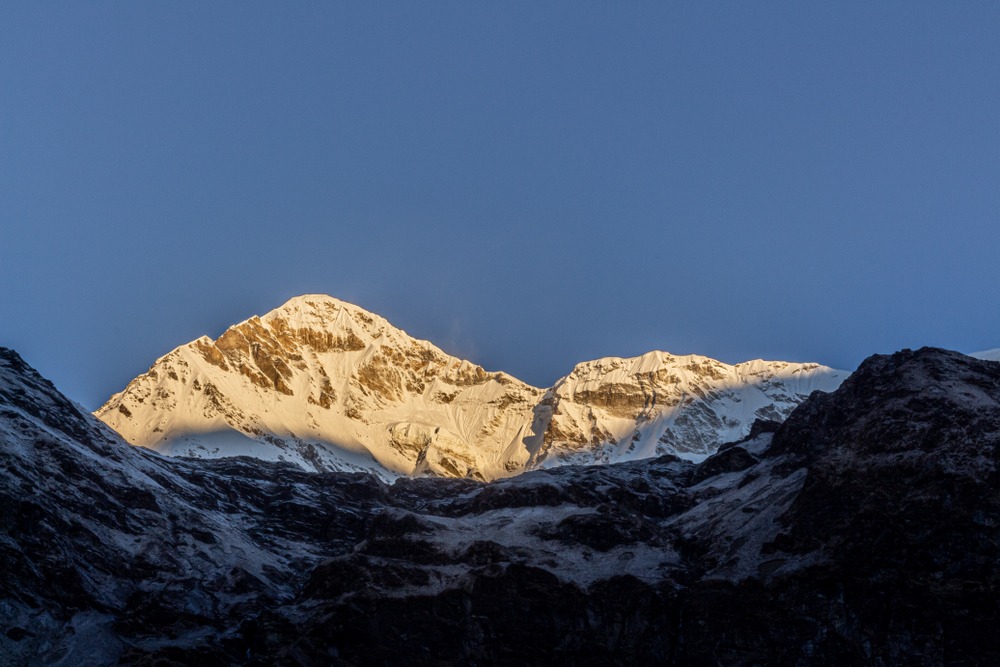
As our journey through the Himalayas comes to an end, it’s essential to take time to rest, recover, and reflect on the experiences and memories we’ve shared along the way. Here are some post-trek recovery tips and reflections to help you transition back to everyday life:
Rest and rejuvenate:
- Give your body time to rest and recover from the physical demands of the trek by taking a few days to relax and recharge. Get plenty of sleep, eat nourishing foods, and hydrate well to replenish your energy levels and support muscle recovery.
- Practice self-care activities such as stretching, yoga, meditation, or massage to soothe sore muscles, reduce tension, and promote relaxation. Take warm baths, apply cold compresses, or use topical treatments to alleviate any aches, pains, or discomforts lingering from the trek.
Reflect and reminisce:
- Take time to reflect on the highlights, challenges, and lessons learned during the trek. Journaling, storytelling, or sharing experiences with friends and family can help process your thoughts and emotions and deepen your appreciation for the journey.
- Look through your photographs, videos, and souvenirs from the trek to relive the moments and memories captured along the way. Share your favorite images and stories with others to inspire and motivate fellow adventurers to embark on their own Himalayan odyssey.
- Express gratitude for the experiences, connections, and insights gained during the trek. Whether it’s thanking your trekking companions, guides, or local hosts for their support and hospitality or expressing appreciation for the natural beauty and wonders of the Himalayas, gratitude cultivates a sense of fulfillment and contentment.
Set new goals and aspirations:
- Use your trekking experience as inspiration to set new goals and aspirations for future adventures, personal growth, and exploration. Whether it’s tackling another Himalayan trek, mastering a new outdoor skill, or pursuing a passion project, let the spirit of adventure and curiosity guide you forward.
- Share your knowledge, skills, and experiences with others by mentoring aspiring trekkers, leading outdoor workshops, or contributing to online communities and forums. Pay it forward by inspiring and empowering others to embark on their own transformative journeys of discovery and self-discovery.
As you transition back to everyday life, carry the memories, lessons, and inspiration gained from the Pindari Glacier Trek with you as a source of strength, wisdom, and joy. Embrace the spirit of adventure, curiosity, and wonder that defines the Himalayan experience, and let it guide you on your continued journey of exploration and growth.
14. Conclusion
The Pindari Glacier Trek is not just a journey—it’s an odyssey of the soul, a quest for beauty and meaning in the heart of the Himalayas. So, pack your bags, lace up your boots, and join me on this adventure of a lifetime.
Frequently Asked Questions
1. What is the duration of the Pindari Glacier Trek?
The Pindari Glacier Trek typically spans 5 to 7 days, offering ample time to immerse yourself in the wonders of the Himalayas.
2. Is the Pindari Glacier Trek suitable for beginners?
Yes, adventurers of all skill levels can embark on the Pindari Glacier Trek with proper preparation and a spirit of adventure.
3. Are there any altitude-related risks associated with the trek?
While the altitude of the Pindari Glacier Trek is moderate, it’s essential to acclimatize slowly and listen to your body to avoid altitude sickness.
4. Can I undertake the trek without a guide?
While it’s possible to trek independently, hiring a local guide is recommended for safety and navigation purposes, especially for those unfamiliar with the terrain.
5. What are the highlights of the Pindari Glacier Trek?
From breathtaking landscapes to encounters with local wildlife, the Pindari Glacier Trek offers a wealth of experiences that will stay with you long after the journey is over.
Also Read About – What Makes Kedarkantha Trek a Top Choice for Adventure Seekers

